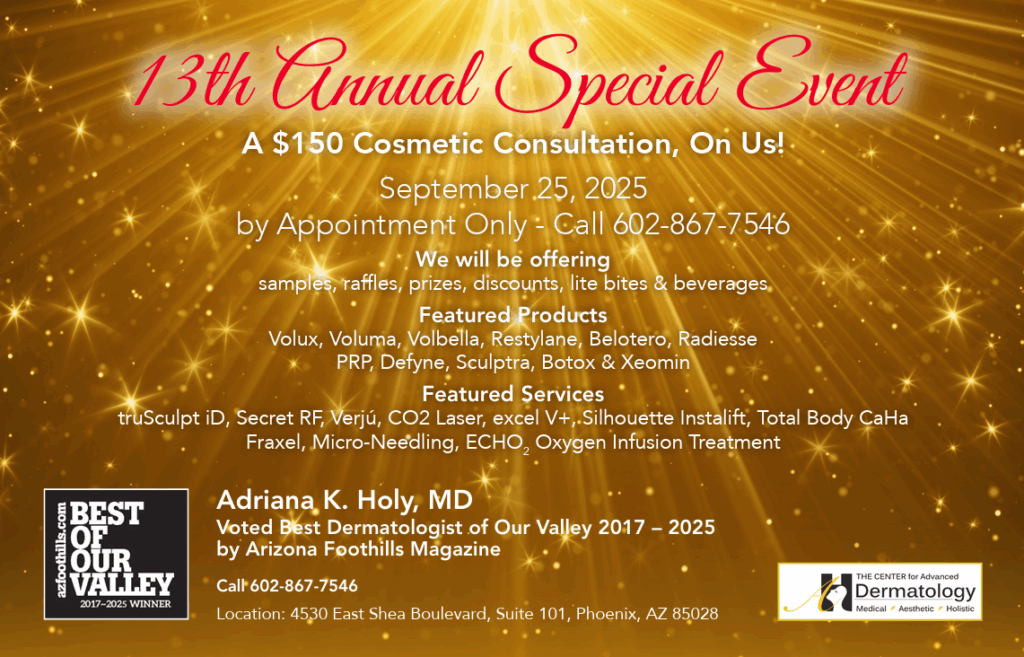Anti-aging Tips for People in Their 50s
Hitting your 50s doesn’t mean aging—it means upgrading. Skip the same old advice and tune into what’s trending in dermatology and aesthetics this year. Fine lines and a few sunspots may have shown up uninvited, but aging skin doesn’t have to mean dull, tired or saggy. With the right skincare strategy, your 50s can be the decade where your skin looks the best it ever has.
Your skin barrier is your MVP in your 50s. As estrogen levels drop, skin can become drier, more sensitive, slower to bounce back. The fix? Products packed with ceramides, peptides and niacinamide. These rebuild and reinforce your skin’s natural defense system, helping to reduce inflammation and restore a healthy, supple glow. Don’t over cleanse; stick to a gentle cleanser morning and night.
From AI-powered skin scans that customize skincare routines to at-home LED and microcurrent devices, tech is totally transforming the aging game. Red light therapy is particularly hot this year and clinically shown to boost collagen and reduce fine lines with consistent use. Many newer LED masks now include cryo features to de-puff and energize tired skin in one go. It’s like a mini spa at home
If you haven’t heard of exosomes yet, you will. These high-tech, cell-signaling powerhouses are emerging as the next generation of skin rejuvenation. Dermatologists are now incorporating exosomes and growth factor serums into treatments like microneedling and post-laser recovery—with impressive results in texture and tone. It’s not hype, it’s science meeting skincare at a whole new level.
Gone are the days of 12-step routines. In your 50s, less really is more, as long as your products multitask. Look for hybrids that combine antioxidants, peptides, and hydration in one formula. Think serum sticks, balmy moisturizers and SPFs with added anti-aging ingredients.
Your face isn’t the only place showing signs of aging. The neck, chest, arms and even knees can benefit from active ingredients too. Body products formulated with retinol, AHAs and firming peptides are finally stepping up, and they are worth the shelf space.
For those looking to boost results, treatments like microneedling, PRP or light-based therapies are safe, effective and downtime friendly. A quarterly visit to your dermatologist or aesthetic provider can help maintain long-term results as well as prevent signs of aging before they fully settle in.
Skincare doesn’t stop at the jawline—or the bathroom mirror. What you eat, how you sleep and how you manage stress all show up on your skin. Omega-3s, protein-rich meals and collagen supplements can support skin elasticity. Eight hours of sleep really does wonders in many ways.
In your 50s, great skincare is about intention, not intensity. Invest in quality, consistency and ingredients that love your skin as much as you do. Whether you’re embracing new tech or simply upgrading your moisturizer, the best anti-aging routine is the one that helps you feel confident, radiant, and you—at every age.
Want expert guidance tailored to your skin’s unique needs? Book a consultation with our dermatology team today. We’ll help build a results-drive plan you’ll enjoy and see visible results from. Because aging well isn’t about turning back the clock; it’s about owning every year with glowing, healthy skin.
Contact THE CENTER for Advanced Dermatology at 602-867-7546 or WEBSITE.



